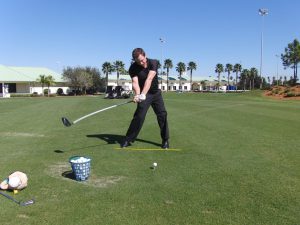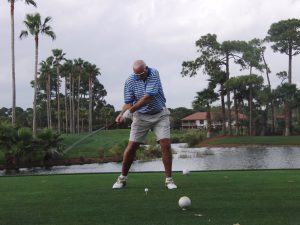Sometimes It’s the Arrows, Not the Archer

By Dr. T. J. Tomasi, Keiser University College of Golf Senior Faculty and Director of Research
Indeed, you can’t ‘buy’ a good golf game, but it is also true that your tools must fit not only their purpose but also their user – and that would be you. So below, I’ve outlined some essential tools used in golf and how they should fit their golfer.
The Driver/Irons
Check the loft on your driver. If the loft isn’t stamped on it somewhere, have a pro measure it for you. Remember, too little loft is a big mistake – unless you have a very high clubhead speed (e.g., over 105 mph), nothing less than 10.5 degrees works. If you don’t like what you have, hold an “audition.” Try out all kinds of demo models. Use some impact tape and check how often you hit each driver in the center of the clubface. Do the same with your irons. Remember, solid contact in the center of the clubface is the key to good golf shots.
- Consider dumping the long irons and replacing them with hybrids. Most hybrids are easier to hit and very versatile.
- Check your wedges. If you don’t have an L-wedge (58-60 degrees or more), add one to your set. If you can’t afford it, have your sand wedge bent to 58 degrees.
Club Shafts
Have a club fitter or golf professional check the shafts in your clubs for at least two things: (1) Are they the proper flex for you? (2) Do they match throughout your set? The irons, fairway metals, and driver shafts should match.
Another way of doing this is to hit various demo clubs and/or hit the clubs of some of your friends. Try all basic flexes: regular, stiff, extra stiff, and seniors. If you’re a female or a senior, ask about women’s flexes. It’s super important to match your club flex to your swing speed. And while you’re at the club fitter, have the lie/loft of your irons checked as well. I once had a tour pro come to me with a strange complaint – ‘I can’t hit my eight iron,’ she said, but otherwise, she was a great iron player. After a few shots on the practice tee, I knew it wasn’t her swing, so I checked her loft, which was way off. Once her 8-iron became a ‘real 8-iron,’ she hit it like the pro she was. So, check your lofts and lies – even for new clubs!
Grips
Are your grips the proper size? If you think they’re too small, wrap some gauze around them and hit some practice shots. Ask your teaching pro if you need more clarification about your grip size. And if you haven’t changed your grips in the past two years and play at least twice a week, spring for new ones.
Golf Ball
Take your golf ball to the vet. Buy three major brands and take them to a practice area to compare. Play some pitch shots, hit some chips, and roll a bunch of putts, monitoring them for feel and control. They all will perform about the same distance-wise, but from close in, you may detect some difference in the feel. Use the one that feels best.
Takeaway: This is not an exhaustive list, but it does give you a starting point – for more info, see my book series ‘Play Better Golf.’

This pro has a very high driver club head speed, so his club shaft needs to be stiff+. Note that the hands are almost at impact, whereas the clubhead has a lot of ground to cover for the ball. It’s maintaining this differential between the hands and the clubhead until the last moment that creates power – and the shaft that best fosters this ‘power differential’ in your swing is the shaft for you.

One of the changes this senior amateur needs to make is a more flexible shaft that will help keep the clubhead behind the hands before impact. If I were his teacher, I’d change his basic swing and then match his new swing to the correct shaft flex.
If you’d like to study with Bradley Turner and other PGA Master Professionals, contact the College of Golf today.












